Day 6 – 8: Leg 1 starts
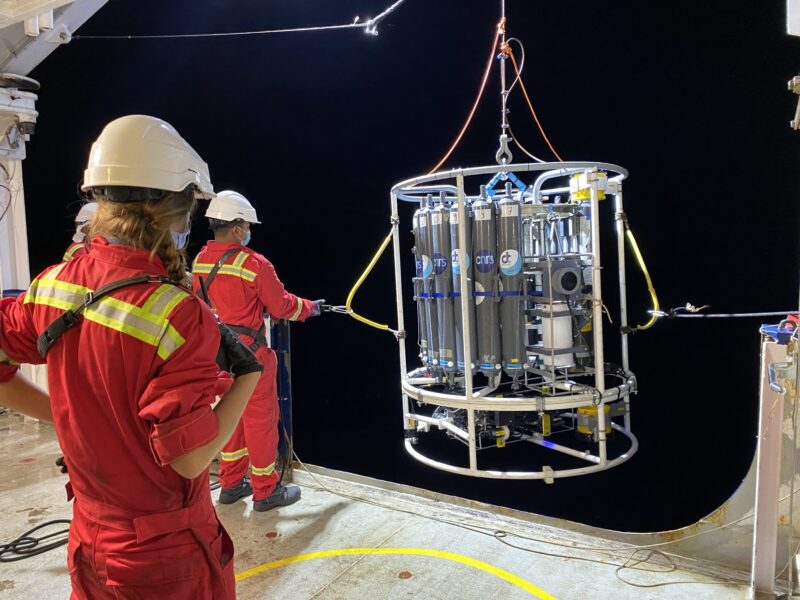
24-27 avril 2022 | Mozambique Channel
Authors: Salomé Pellé, Eugénie Dufour, Alycia Valvandrin, Sara Sergi, Christophe Mocquet
The last three days were marked by the arrival at the first Leg of the RESILIENCE campaign: our first sampling ground. The purpose of this field is to sample on a small scale the water masses and ecosystems at the margin of an anticyclonic eddy currently located northwest of Europa Island, in the Mozambique Channel. A cyclonic eddy has also formed south of the first one, allowing us to study the interface between these two dynamic structures. If you want to know more about eddies and circulation in the Mozambique Channel, we refer you to the seminar that Pierrick Penven gave us on board on this subjet.
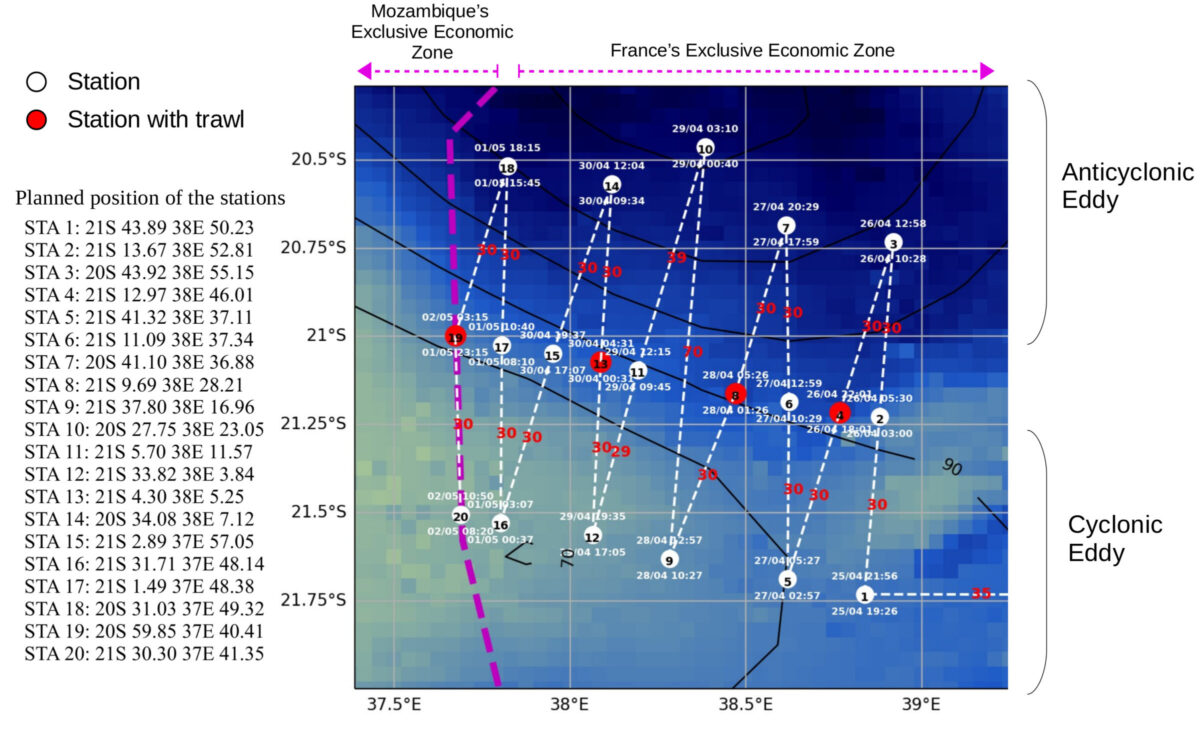
The stations are in full swing day and night, and after initial delays due to weather and hardware problems, the teams are starting to get used to each other and the operation schedules are becoming more and more precise. Fortunately, because during this first Leg 1 we have a real marathon of stations involving many scientific instruments.
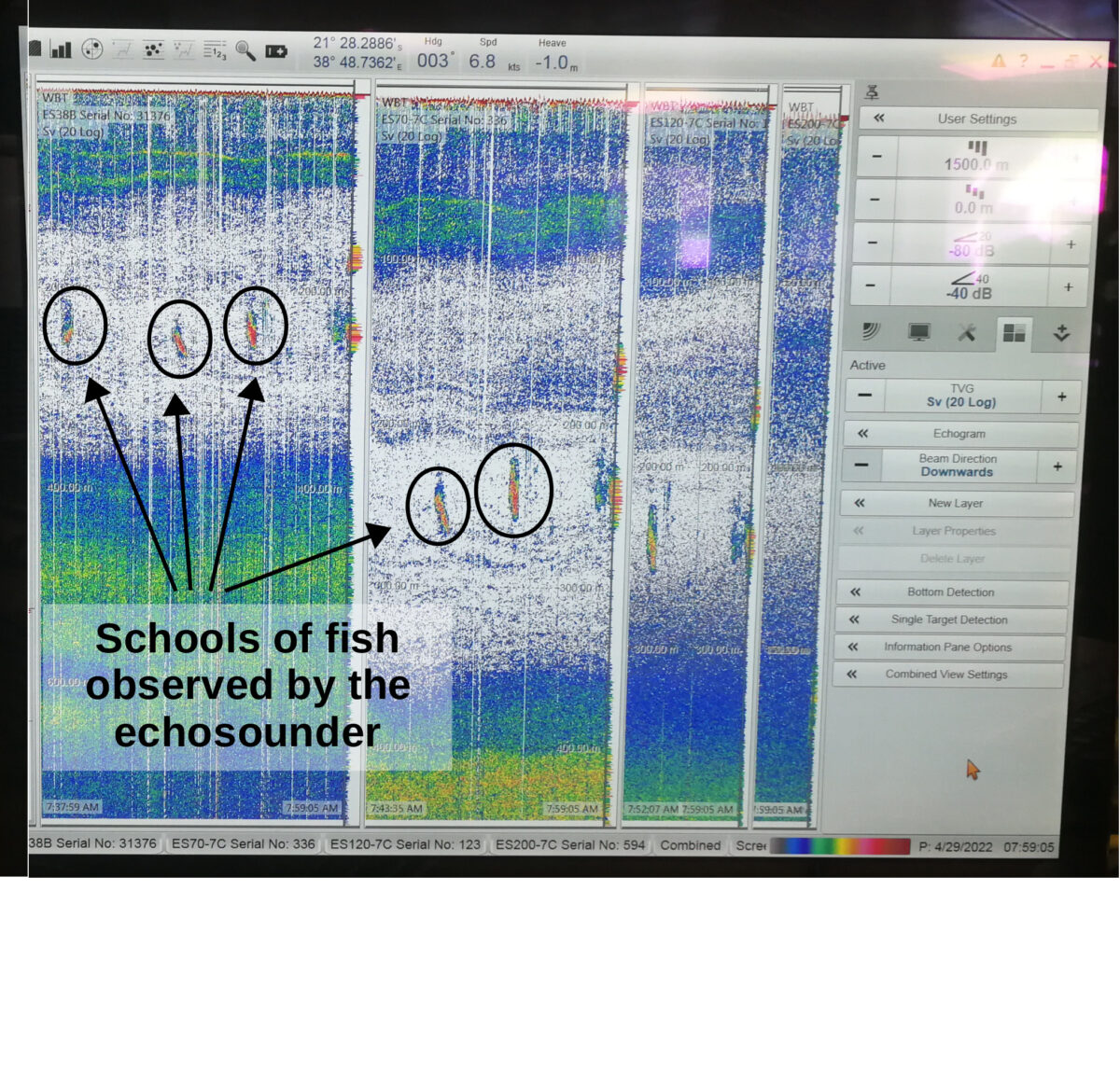
The first trawl was carried out on the morning of April 27 and it will allow to compare the catches with the continuous measurements carried out by active acoustics. Indeed, echosounders under the hull of the Marion send acoustic signals (hence the name “active” acoustics) at different frequencies and analyze the signals received reflected by marine organisms, but also by bubbles or sediments in suspension. The use of several frequencies (18, 38, 70 120, 200 kHz) combined with trawl sampling allows the identification of organisms on the recordings.

Some of the students did not like the smell of the trawl catch and the closed laboratory set up in a container. Its contents were sorted, discovering multiple goodies such as flip-flops (exclusive photograph opposite). Fortunately, more native catches were also made, such as squid, flying fish, crustaceans and siphonophores.
The multinet, an instrument with five nets with a mesh size of 200 μm, was deployed at each station to capture zooplankton at different depths between the surface and 200 m. Zooplankton correspond to microscopic animals transported by the currents, which feed on phytoplankton (microalgae; this is actually a bit more complicated, if you are interested in this topic you can read the summary of the seminar of Fernando Gomez). The samples obtained were fixed in formalin to preserve the organisms and to allow the identification of the species on return to land at the Nelson Mandela University in South Africa.
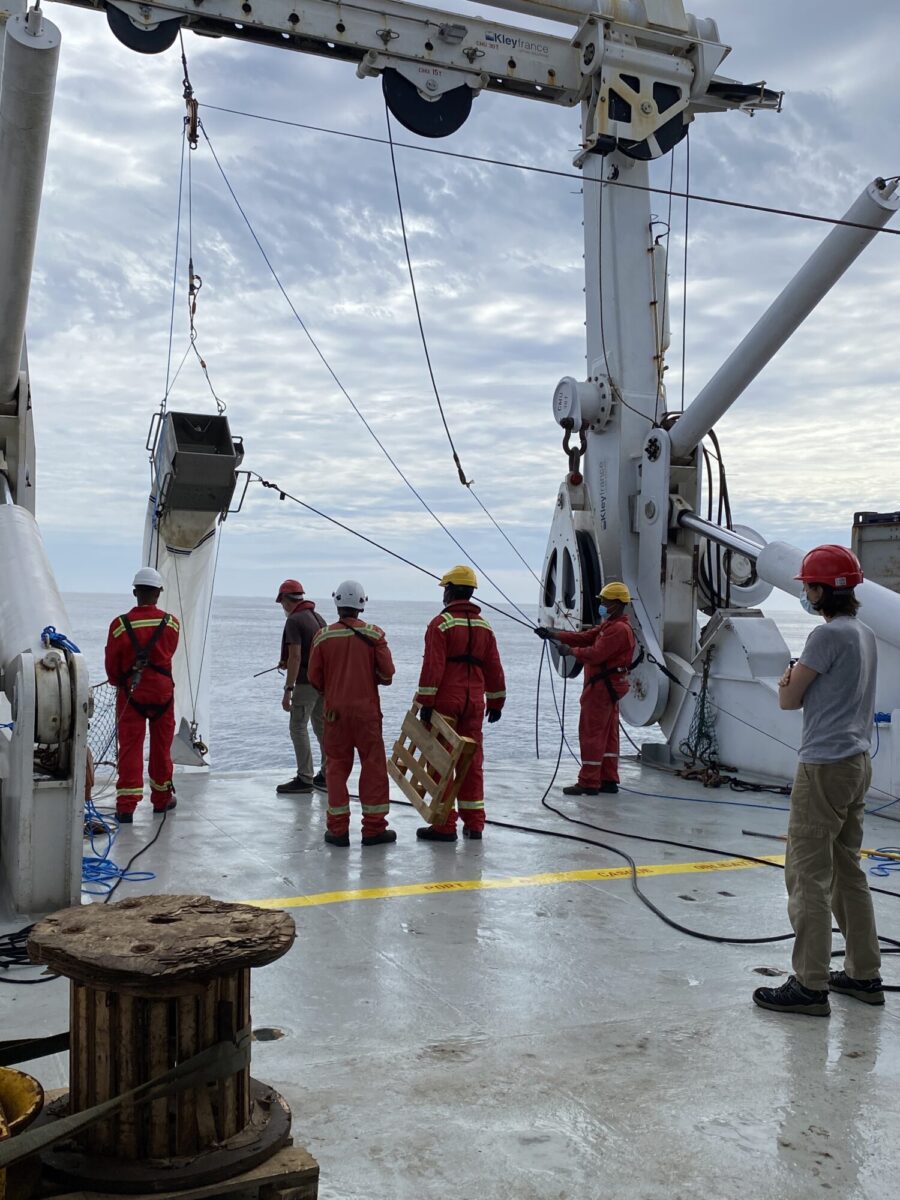
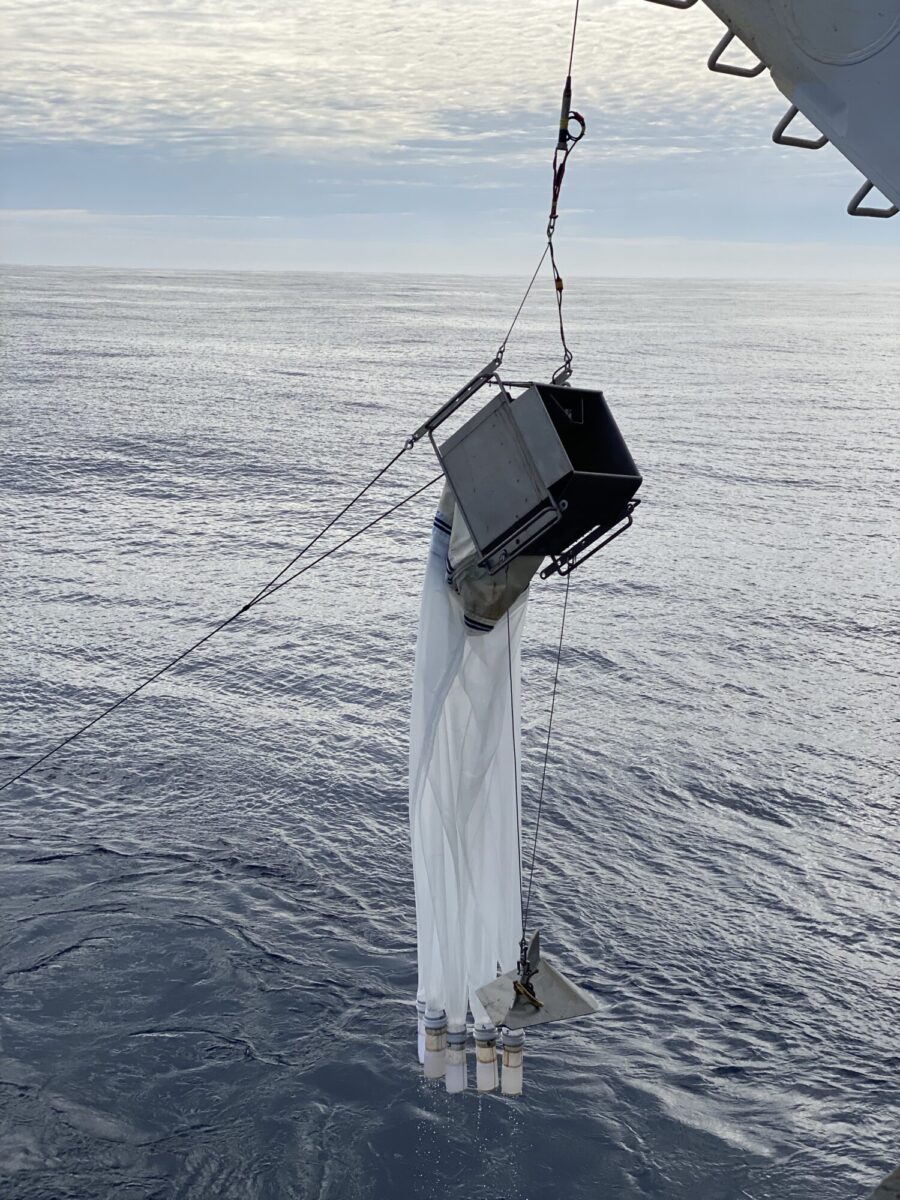
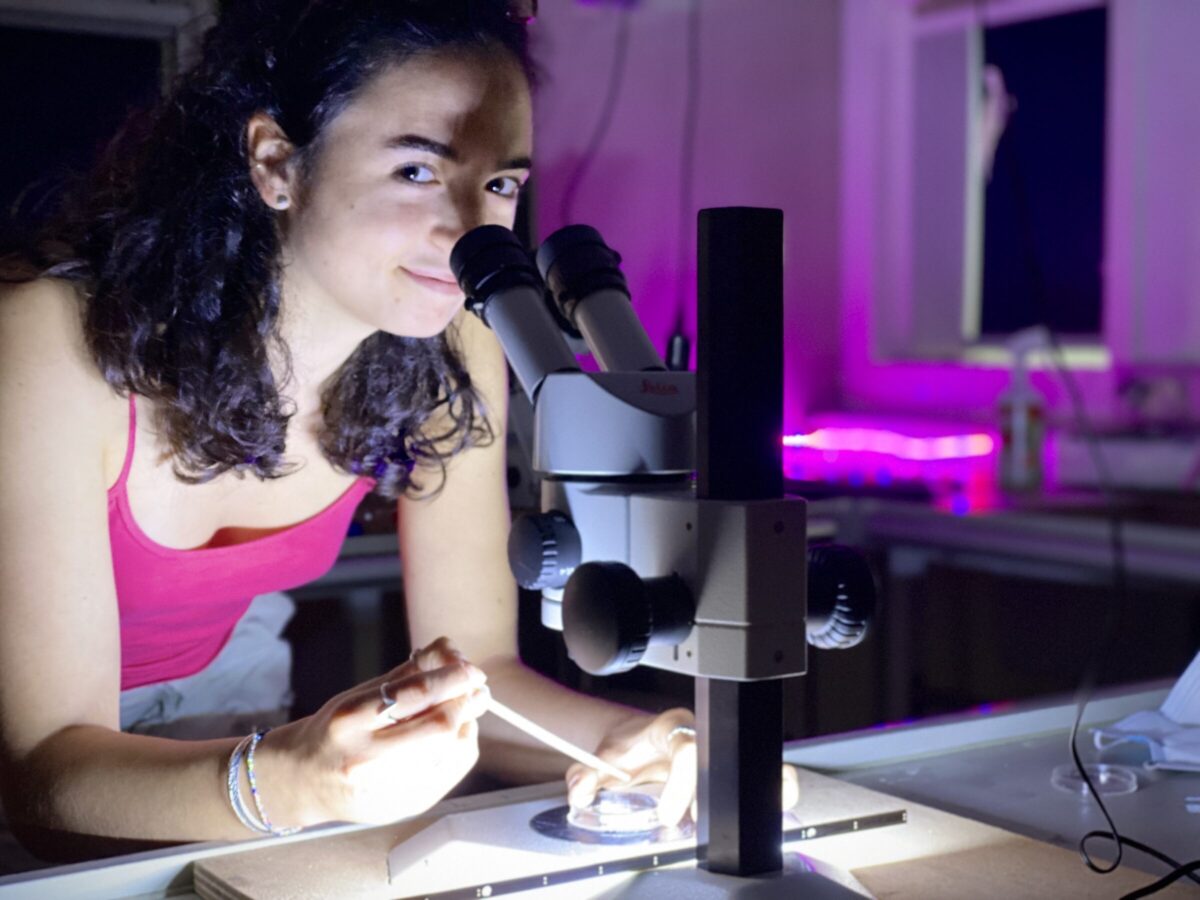
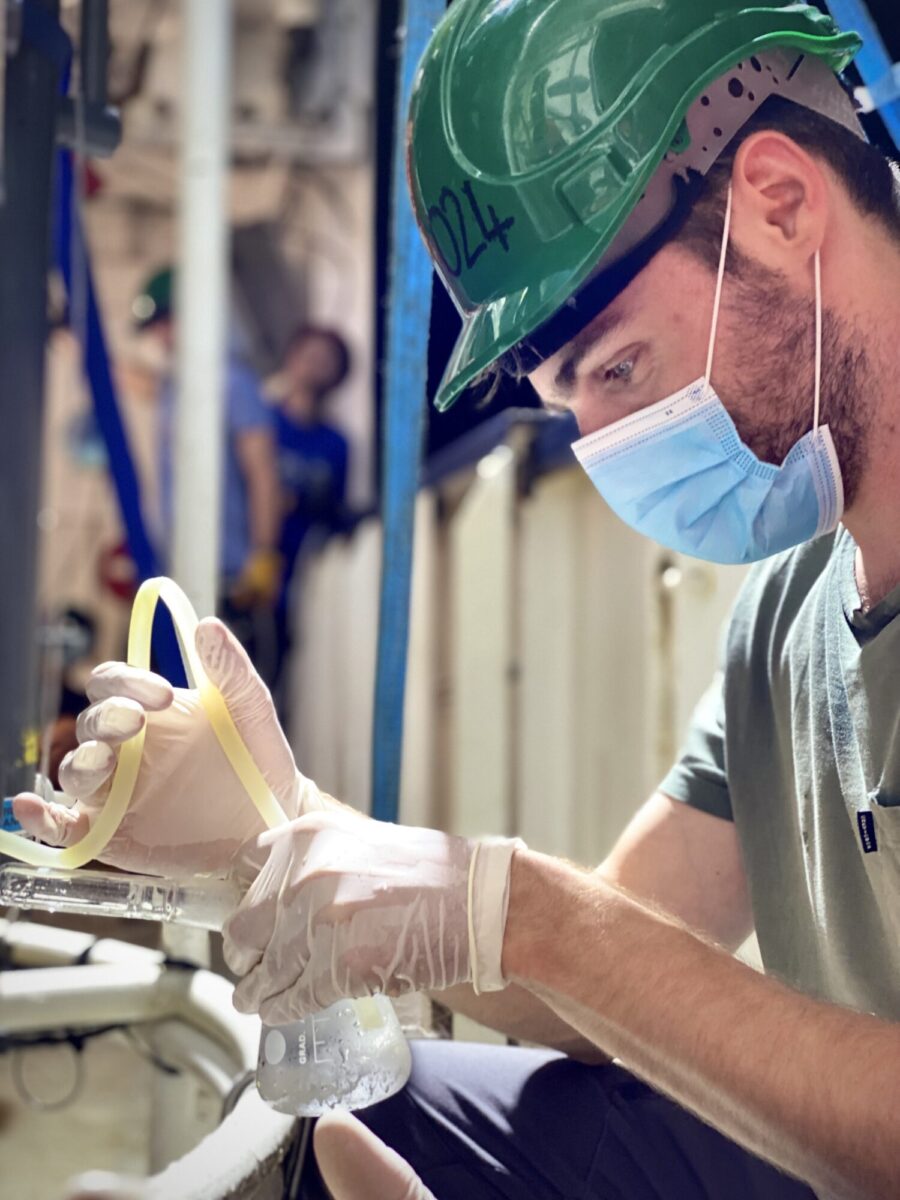
The rosette and all the sensors installed on it (including the famous CTD) allow us, as at each station, to obtain information on the properties of the water masses (temperature, salinity, fluorescence, oxygen, turbidity, current velocities) over the entire water column, as well as to sample water at different depths. The 19 bottles are closed during the ascent to depths chosen according to the measurements made during the descent. The water in the bottles is then distributed among the teams on board.
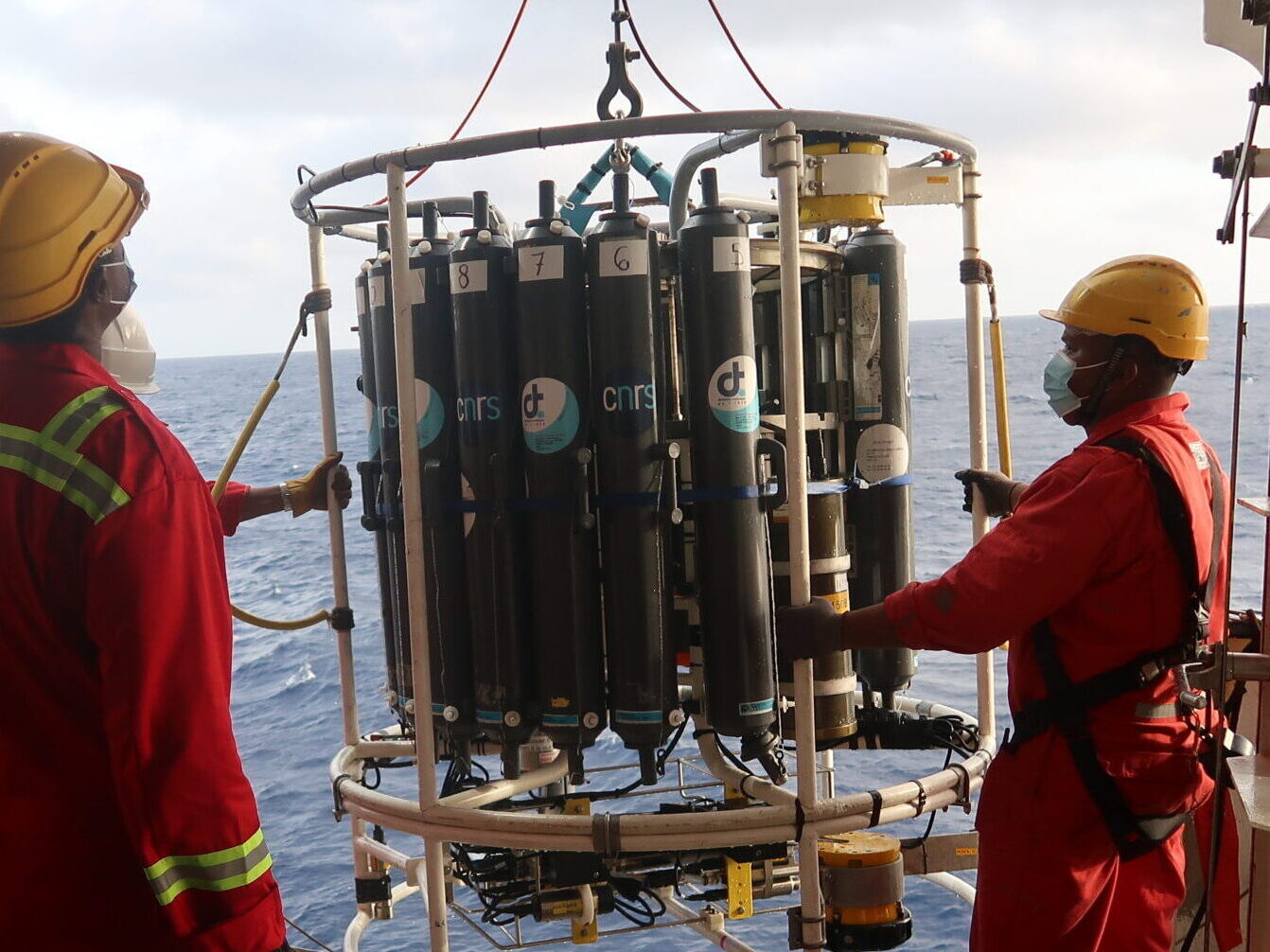
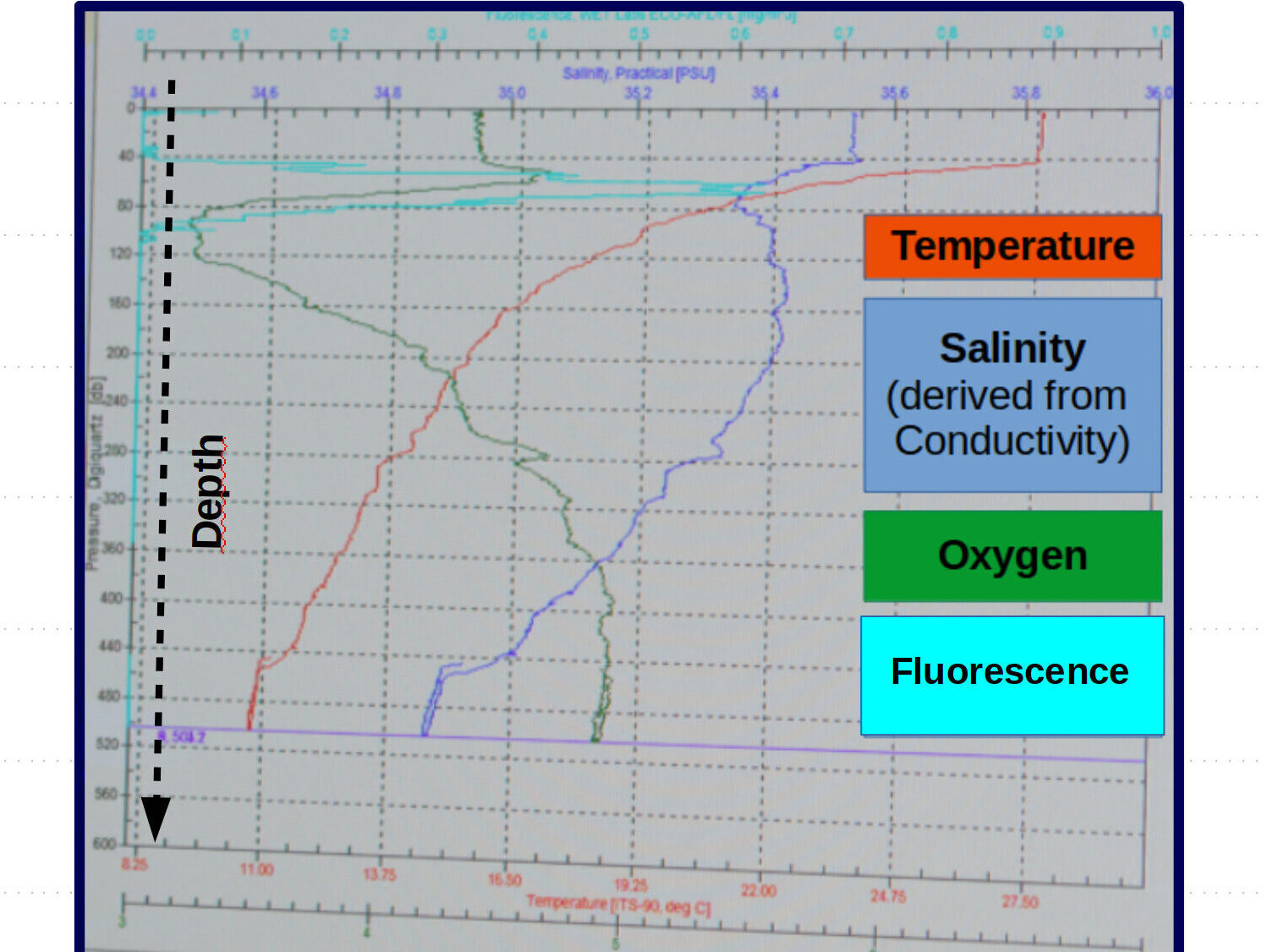
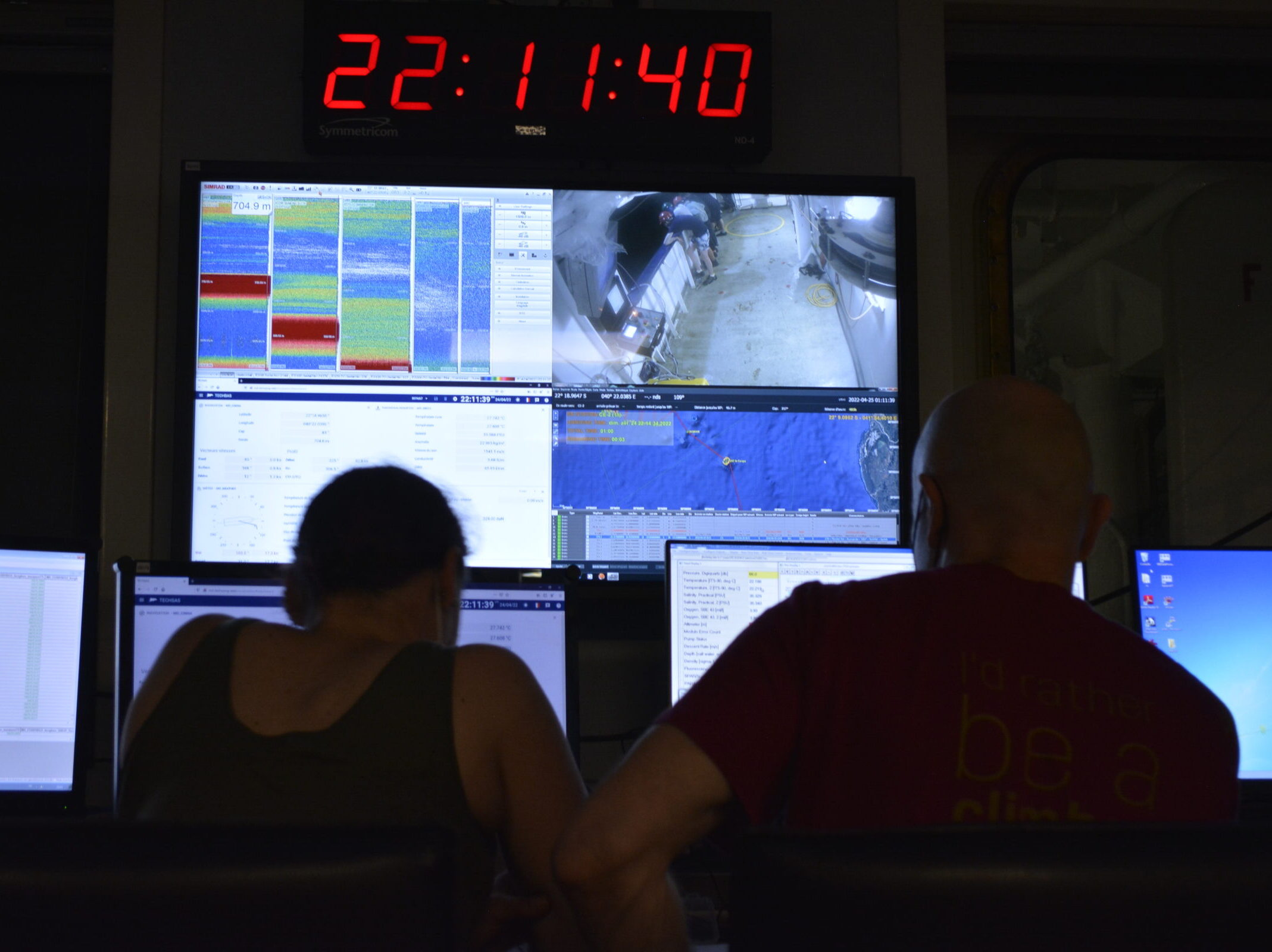
Several liters of seawater were filtered from the rosette in order to recover the environmental DNA present at different depths. These DNA traces allow us to estimate the presence of certain species in a given area by a non-invasive method. The results can be compared with visual observations of megafauna made during the mission.
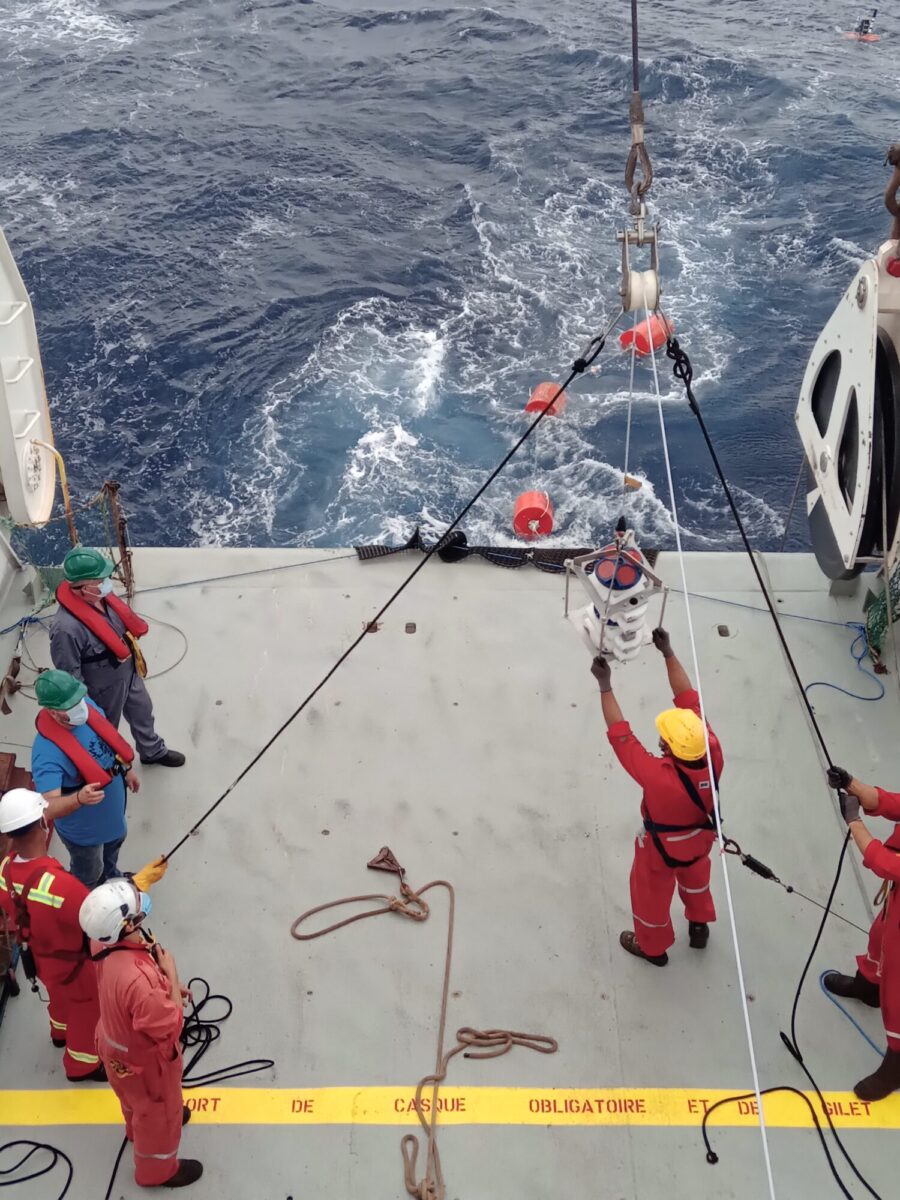
Just before the Leg 1, the Bombix, a 1km long mooring system with a multitude of instruments was also launched in order to detect the presence of whales but also to acquire physicochemical data of this area.
Meanwhile, the seabird and marine mammal teams are continuing their observations. The main objective of the RESILIENCE campaign is to compare observations of top predators with physicochemical and plankton measurements. For example, red-footed boobies flew over the boat in search of flying fish.
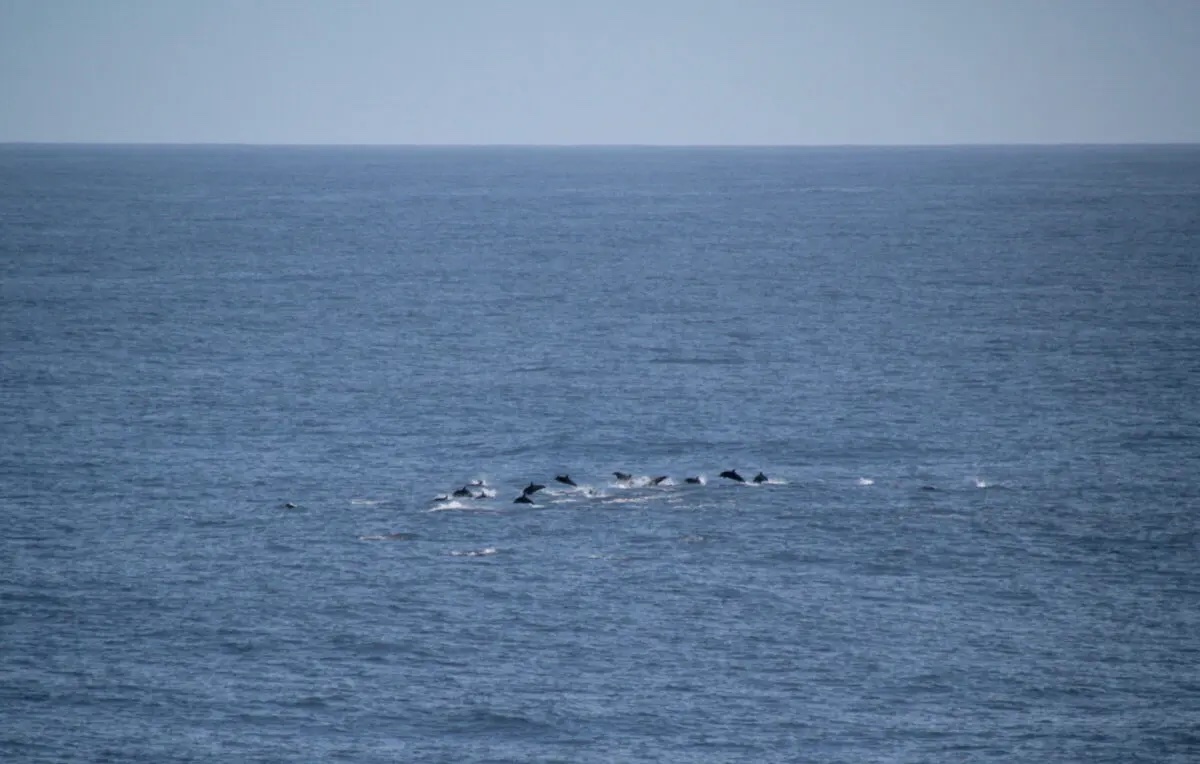
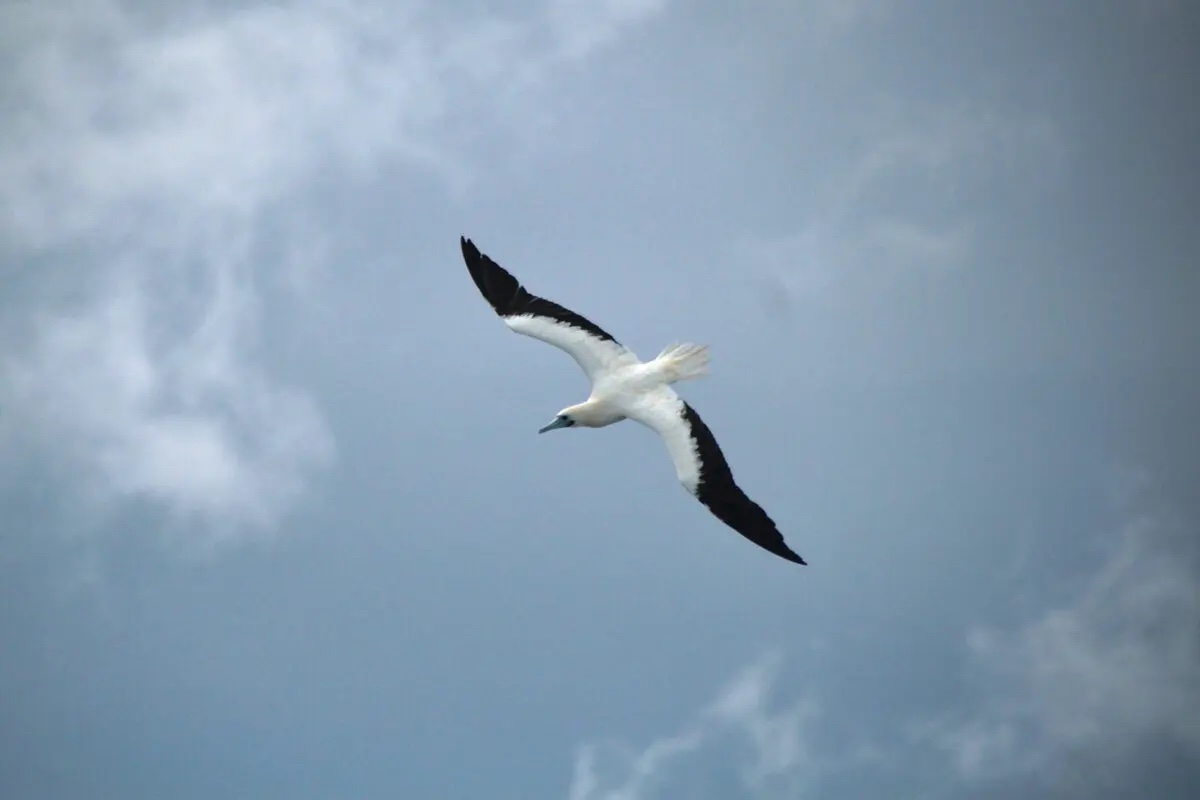
For those who are not on shift at 4 pm, the seminars continue to draw people into the conference room: Anne Lebourges, research engeineer at LEMAR, presented us active acoustics techniques for the study of pelagic communities (ie the organisms that are in the water column). The students also take advantage of the seminars to present their Master 1 internships: Guerric and Alycia opened the dance by talking about nematodes in mangroves and aquatic polyculture (aquaculture based on the production of different species). The beginning of a long series we hope!
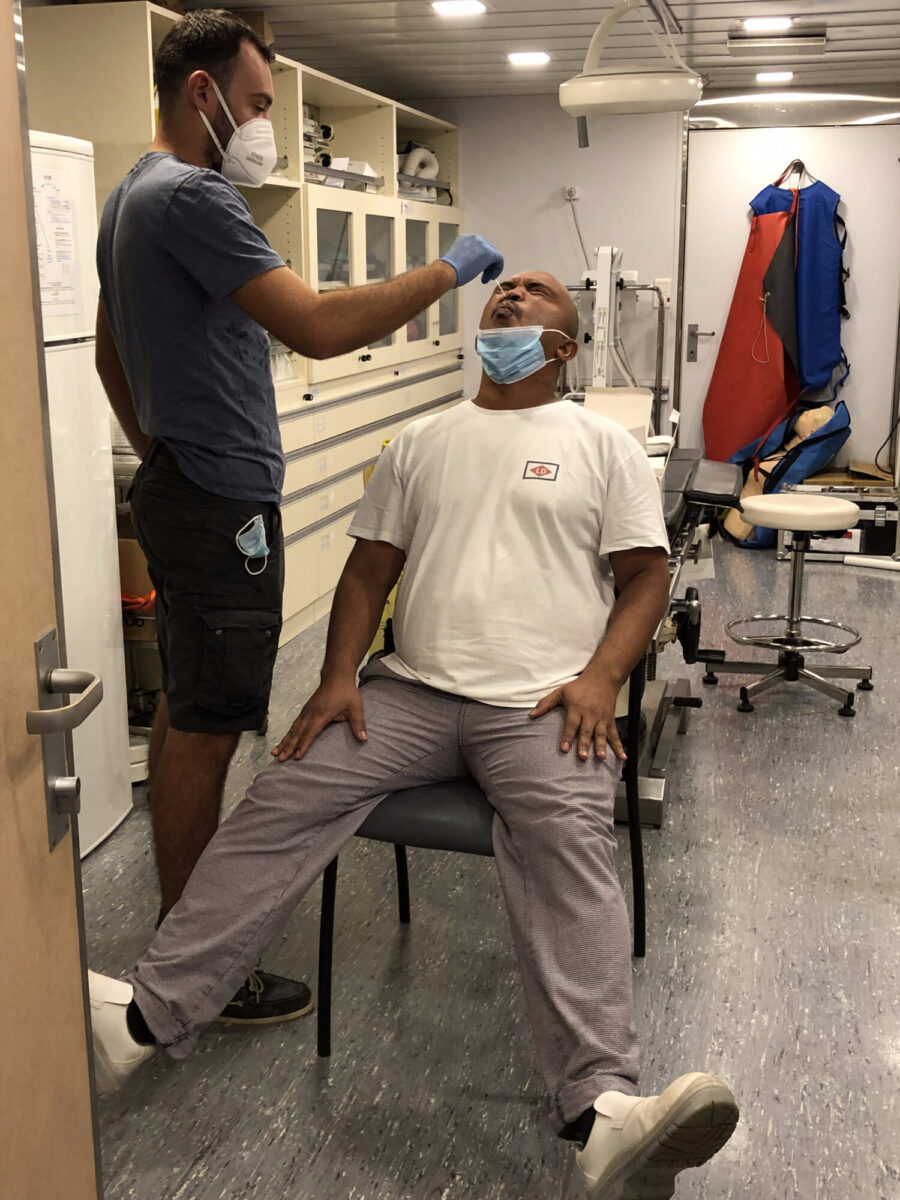
Finally, the day of April 27 ended in joy and good humor after the announcement of a free COVID ship, allowing us to finally enjoy the pretty smiles and mustaches of the people on board.
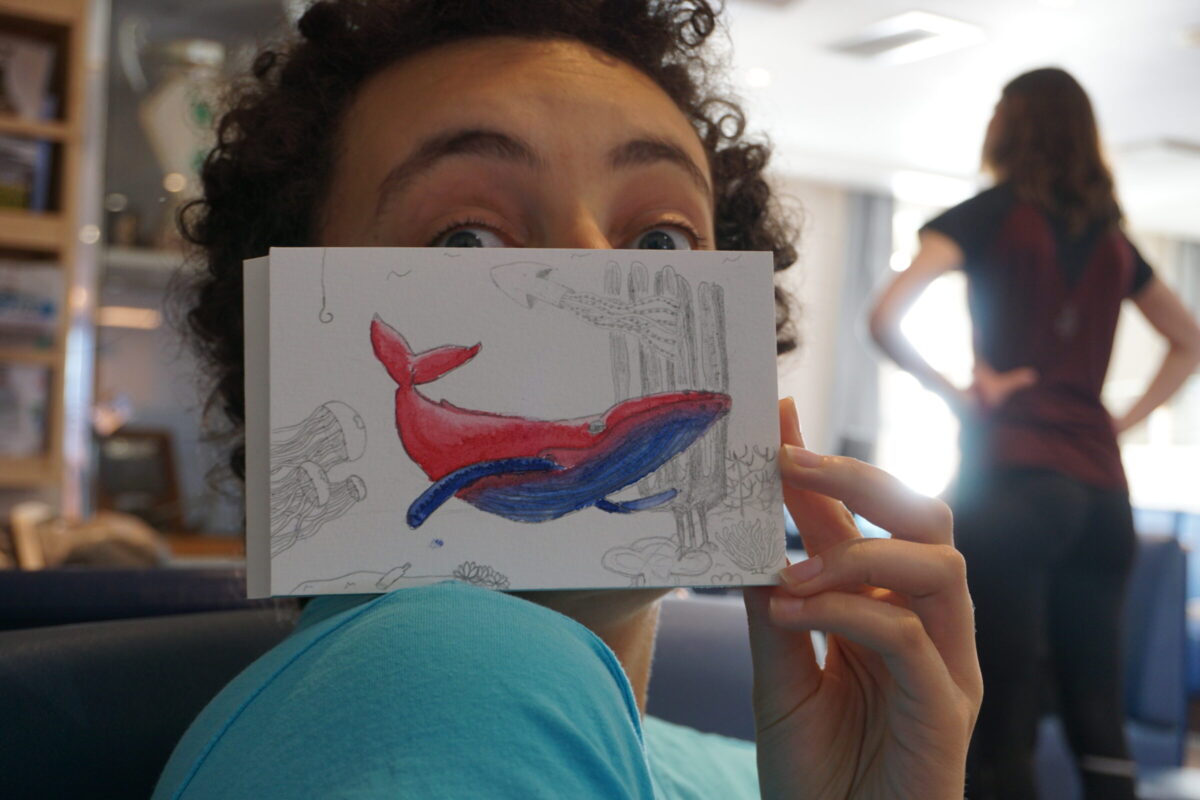
 Attention, vous utilisez un navigateur peu sûr !
Attention, vous utilisez un navigateur peu sûr !